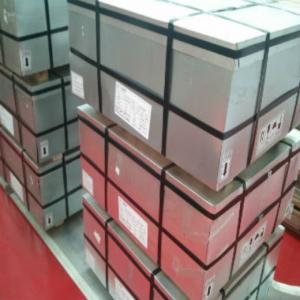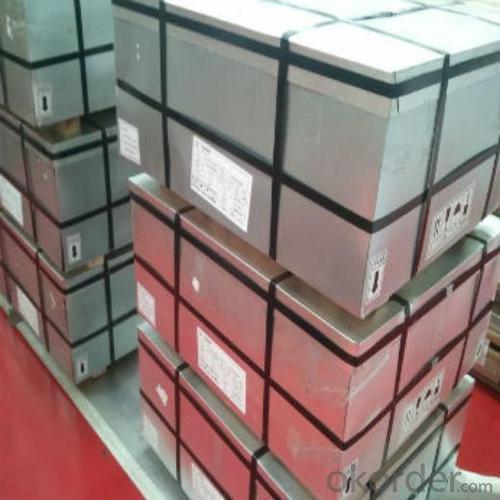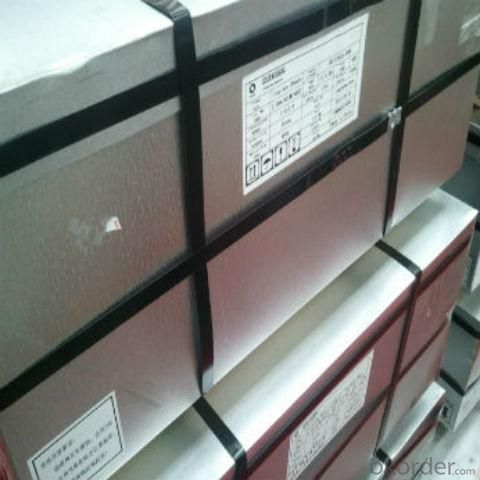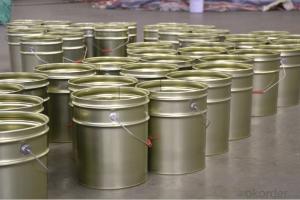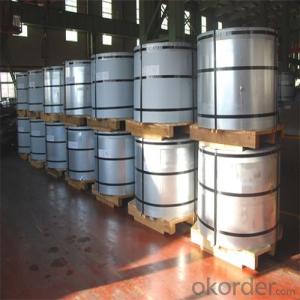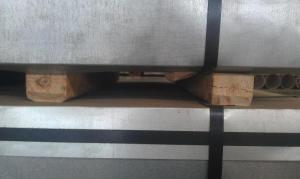Tinplate For Edible Oil Can-CHBB
- Loading Port:
- China Main Port
- Payment Terms:
- TT or L/C
- Min Order Qty:
- 20 Tons~25 Tons m.t.
- Supply Capability:
- 40000 m.t.Per Month m.t./month
OKorder Service Pledge
OKorder Financial Service
You Might Also Like
General information of Tinplate For Edible Oil Can
Steel Type | MR |
Temper (BA&CA) | T1~T5, DR8 |
Coating | 2.8~8.4g/m2 |
Thickness & Tolerance | 0.15~0.5mm (Tolerance:±0.01mm) |
Width & Tolerance | 600~1000 mm(Tolerance: +2/-0mm) |
I.D | 508 MM |
Coil Weight | 3~10 MT |
Passivation | 311 |
Oiling | DOS |
Surface Finish | Bright ,Stone ,Silver ,Matte |
Min Order | 25 Tons for 1 20 feet FCL |
Package | Seaworthy Export Standard Wooden Pallet |
Standard Available | GB/T2520-2000, JIS G3303, ASTM A623, BS EN10202 |
Lead Time | 35 days after receiving buyer's original L/C or Prepayment |
Special specifications are available on customers' requirements. | |
Technical data of Tinplate For Edible Oil Can
Chemical Composition(%) | Mechanical Property |
C:0.02~0.04 | Yield Strength: (Mpa):280~320 |
Si:0.01~0.03 | TensileStrength: (Mpa):340~390 |
Mn:0.18~0.22 | Elongation:20%~30% |
P:0.014~0.016 | ------------- |
S:0.006~0.009 |
Application of Tinplate For Edible Oil Can
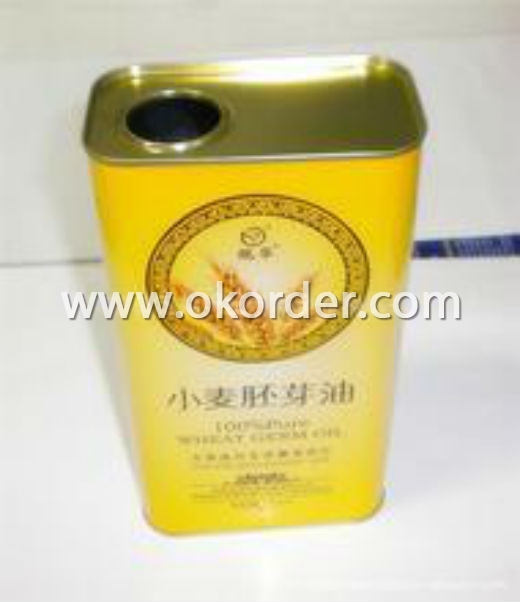

Tinplate is widely used for making all types of containers such as artistic cans, tea cans, painting cans,
chemical package cans and metal printing etc. Its applications are not limited to containers; recently,
tinplate has also been used for making electrical machinery parts and many other products.
Equipment and Facility of Tinplate
Tin Coating Line of Tinplate For Edible Oil Can
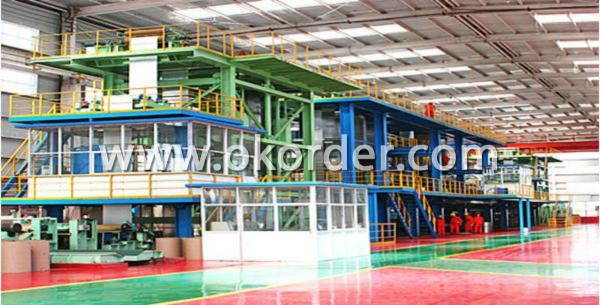
Cold Rolling Mill Batch Annealing Furnace
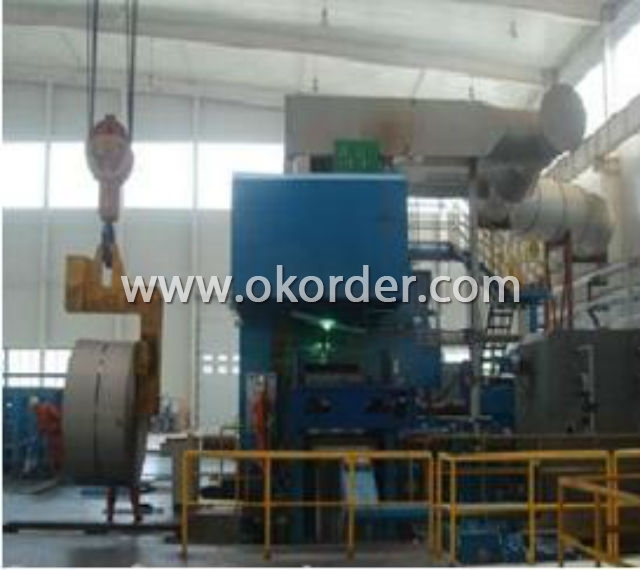

Cutting Line Stock Area
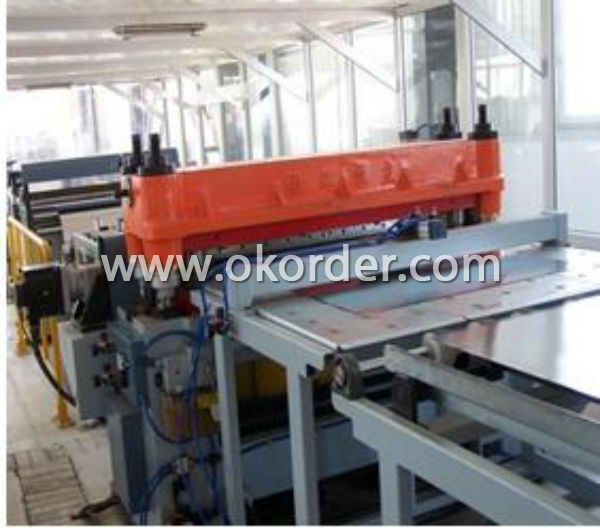

Quantity Control System of Tinplate
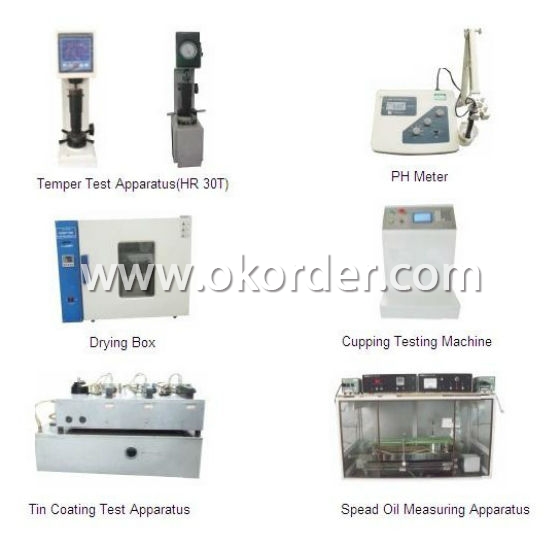
- Q: How is tinplate coated with organic materials for specific applications?
- Tinplate can be coated with organic materials for specific applications through a process called organic coating or lacquering. In this process, a thin layer of organic material, such as polymer or lacquer, is applied onto the surface of the tinplate. This coating provides various benefits like corrosion resistance, improved aesthetic appearance, and enhanced durability. The organic coating can be applied through methods like roll coating, spray coating, or electrostatic deposition, depending on the specific requirements of the application.
- Q: What are the main differences between tinplate and tinplate laminates in terms of design flexibility?
- Tinplate offers limited design flexibility as it is a single-layer material, while tinplate laminates provide greater design flexibility due to their multi-layer structure, allowing for the incorporation of different materials and finishes to achieve a wider range of design options.
- Q: What is the average lifespan of tinplate products?
- The average lifespan of tinplate products can vary depending on various factors such as the quality of the tin coating, the usage conditions, and proper maintenance. However, on average, tinplate products can last for several years to decades if they are well-maintained and not exposed to extreme conditions or corrosive environments.
- Q: Can tinplate be used for packaging medical devices?
- Yes, tinplate can be used for packaging medical devices. Tinplate is a durable and corrosion-resistant material that provides adequate protection to medical devices. It is commonly used for packaging pharmaceutical products, including medical devices, due to its ability to maintain product integrity and protect against external contamination.
- Q: Can tinplate be used for packaging of perishable goods?
- Yes, tinplate can be used for packaging of perishable goods. Tinplate is a durable and protective material that can provide a barrier against moisture, oxygen, and light, which are factors that can contribute to the spoilage of perishable products. Additionally, tinplate can offer a longer shelf life for perishable goods due to its ability to maintain product quality and prevent contamination.
- Q: Tinplate which applies to product packaging?
- Barrier: tinplate cans have excellent barrier properties than any other materials are excellent, gas barrier properties, moisture resistance, shading and aroma were good, and the sealing is reliable, reliable protection products. 3. mature technology and high production efficiency: the production of tinplate has a long history, mature technology is a set of production equipment with matching, high production efficiency, can meet a variety of product packaging needs.
- Q: What are the main trends in tinplate packaging?
- The main trends in tinplate packaging include a shift towards sustainable and eco-friendly options, increased customization and personalization, advancements in technology for improved production processes, and a growing demand for convenience and functionality in packaging design.
- Q: What are the different methods of disposing of tinplate packaging?
- There are several methods for disposing of tinplate packaging. The most common method is recycling, where the tinplate is collected and processed to be used in the manufacturing of new products. Another option is repurposing, where the packaging is creatively transformed into new items or used for storage purposes. Additionally, tinplate packaging can be disposed of in landfills, although this is the least environmentally friendly option. It is important to check local regulations and recycling programs to ensure proper disposal of tinplate packaging.
- Q: How does tinplate contribute to the preservation of photographic equipment?
- Tinplate contributes to the preservation of photographic equipment by providing a durable and corrosion-resistant material for the construction of camera bodies, lens barrels, and other sensitive components. Its protective coating prevents the equipment from rusting or deteriorating over time, ensuring the longevity and functionality of the photographic devices.
- Q: How does tinplate contribute to the shelf life of beverages?
- Tinplate contributes to the shelf life of beverages by providing a protective barrier that prevents corrosion and contamination. It helps to maintain the integrity of the beverage by preventing exposure to oxygen, moisture, and light, which can degrade its quality. Additionally, tinplate's resistance to temperature changes and its ability to provide a tight seal further extend the shelf life of beverages by preventing spoilage and maintaining their freshness.
1. Manufacturer Overview
| Location | Hebei,China |
| Year Established | 2009 |
| Annual Output Value | US$2.5 Million - US$5 Million |
| Main Markets | North America South America Eastern Europe Southeast Asia Africa Mid East Eastern Asia Western Europe Central America Northern Europe Southern Europe Domestic Market |
| Company Certifications | ISO9001:2000 |
2. Manufacturer Certificates
| a) Certification Name | |
| Range | |
| Reference | |
| Validity Period |
3. Manufacturer Capability
| a) Trade Capacity | |
| Nearest Port | TIANJIN |
| Export Percentage | 11% - 20% |
| No.of Employees in Trade Department | 6-10 People |
| Language Spoken: | English, Chinese |
| b) Factory Information | |
| Factory Size: | Above 100,000 square meters |
| No. of Production Lines | Above 10 |
| Contract Manufacturing | |
| Product Price Range | Average |
Send your message to us
Tinplate For Edible Oil Can-CHBB
- Loading Port:
- China Main Port
- Payment Terms:
- TT or L/C
- Min Order Qty:
- 20 Tons~25 Tons m.t.
- Supply Capability:
- 40000 m.t.Per Month m.t./month
OKorder Service Pledge
OKorder Financial Service
Similar products
Hot products
Hot Searches
Related keywords
